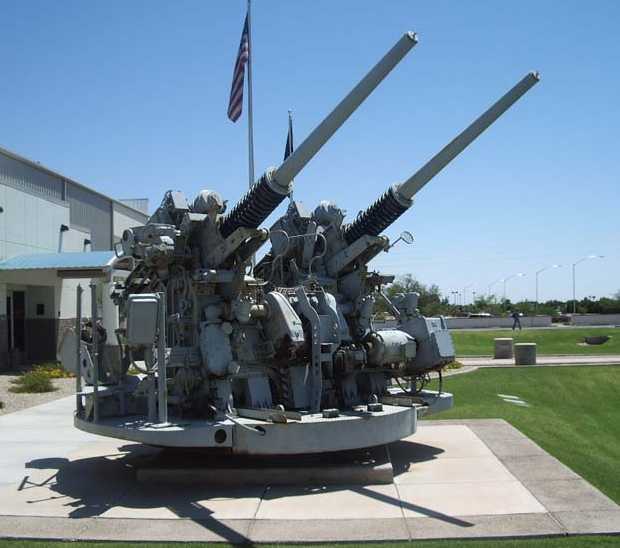
In 1944-1945, the USN found that their 20 mm Oerlikons and 40 mm Bofors batteries were ineffective in stopping Japanese Kamikaze attacks. Only the 5"/38 (12.7 cm) fired a round large enough to kill-stop a determined attacker and this weapon was too heavy to use in the numbers necessary. This problem led to an accelerated program to develop an intermediate-caliber weapon that could fire a VT fuzed shell.
The weapon chosen was the standard 3"/50 (7.62 cm) Mark 22 which was used on many Destroyer Escorts and auxiliaries built during the latter part of World War II. This was the smallest-caliber weapon which could still use the VT fuzes available at the time. It also had a concentric counter-recoil spring, which meant that it was more easily adapted for automatic fire. Automatic fire was achieved with an electrically driven auto-loader using revolving sprockets. BuOrd rushed this through the design phase, with the first prototype being ready for test firing on 1 September 1945. The end of the war slowed development and resources were diverted to the more potent 3"/70 (7.62 cm) design. As a result, it was not until 1948 that this weapon was delivered to the fleet in quantity.
Although completed too late for service during World War II, this weapon was widely used on many USA ships from the late 1940s through to the 1980s and remains in service today (2009) on a few USA ships sold to other nations and on the Norwegian Oslo Class frigates. The Spanish firm of Fabrica de Artilleria, Sociedad Española de Construccion Naval manufactured these guns under license for the Spanish Navy. HMS Victorious was given six twin mounts following her reconstruction during the early 1950s.
Dimensionally, the new twin 3"/50 (7.62 cm) mounting was the same size as the quad 40 mm Bofors mounting, although it weighed a bit more. The additional weight meant that these guns replaced the Bofors guns on a one for three basis, rather than the originally intended one for two basis. Ammunition was loaded from each side into the auto-loader. The sprockets turned intermittently, transporting the rounds to a loading tray, which swung down to be in line with the breech where a rammer then catapulted the rounds directly into the firing-chamber, with the breech-closing mechanism being triggered by the edge of the cartridge case as it tripped one of the ejectors. Effectively, the auto-loader simply replaced the crewmen whose job it was to push shells into the breech. The auto-loader is synchronized with the rhythm of the recoil motion, so that new rounds are ready to be rammed at the instant that the previous cartridge is ejected. Ballistically, the new automatic weapon had the same characteristics as the older weapon, although the higher rate of fire did result in a shorter barrel life.
It is possible that these guns on USS Biddle (DLG-34) damaged a Mig fighter in the Tonkin Gulf on 19 July 1972.
Constructed with an autofretted monobloc barrel with chromium plating and secured at the breech by a bayonet joint. Uses an automatic breech block. The mechanical and electrical complexity of this weapon were near the limits of World War II technology and excellent servicing is required to keep it in operation. However, it did give greatly improved performance against likely aircraft targets, with testing showing that against a target representing a Nakajima plane a single rapid-fire 3"/50 (7.62 cm) was as effective as two 40 mm quad mountings and that it could effectively engage at a much longer range.
As per the nomenclature change in the US Navy after World War II, these weapon designations are for the mountings, not the gun itself. The gun barrel was the Mark 22 first produced during World War II. Mark 27 was the original twin mount, Mark 33 was an improved twin mount with a different slide and Mark 34 was the single mount version.
As of 2001, munitions were being produced by Simmel Difesa (Italy), Nammo Raufoss (Norway) and EXPA (Spain).
| Designation | Weapon: 3"/50 (7.62 cm) Mark 22
Mountings: Marks 27, 33 and 34 |
|---|---|
| Ship Class Used On | United State of American: Many USN ships 1946 through 1990
Britain: HMS Victorious Spain: Destroyers and Frigates Norway: Oslo class frigates |
| Date Of Design | 1945 (gun barrel designed in 1941) |
| Date In Service | 1948 |
| Gun Weight | 1,760 lbs. (798 kg) not including auto-loader |
| Gun Length oa | 159.7 in (4.055 m) |
| Bore Length | 150.3 in (3.816 m) |
| Rifling Length | 126.1 in (3.204 m) |
| Grooves | (24) 0.03 in deep (0.76 mm) |
| Lands | N/A |
| Twist | Uniform RH 1 in 32 |
| Chamber Volume | 217 in3 (3.56 dm3) |
| Rate Of Fire | 45 - 50 rounds per minute |
| Type | Fixed |
|---|---|
| Weight of Complete Round | AA VT Mark 31 Mod 1: 24 lbs. (10.9 kg)
HC Mark 27 Mod 1: 24 lbs. (10.9 kg) ASP M78: 24.4 lbs. (11.1 kg) |
| Projectile Types and Weights | AA VT Mark 31 Mod 1: 13 lbs. (5.9 kg)
HC Mark 27 Mod 1: 13 lbs. (5.9 kg) ASP M78: 13 lbs. (5.9 kg) |
| Bursting Charge | HC: 0.74 lbs. (0.34 kg) Cast TNT
AA VT: 0.54 lbs. (0.24 kg) Cast TNT, Comp. A ASP M78: 0.77 lbs. (0.35 kg) |
| Projectile Length | HC and AA (including nose fuze): 12.13 in (30.8 cm)
ASP M79 : 11.9 in (30.2 cm) Complete round HC: 34.74 in (88.2 cm) Complete round ASP M79 : 33.6 in (85.3 cm) |
| Cartridge Case Type, Size and Empty Weight | United States of America:
Mark 7: Brass, 76.2 x 584 mm, 7.0 lbs. (3.18 kg) Mark 9: Steel, 76.2 x 584 mm, 6.54 lbs. (2.97 kg) Other Countries: N/A |
| Propellant Charge | 4.0 lbs. (1.81 kg) SPD or SPDN 2 |
| Muzzle Velocity | 2,700 fps (823 mps) |
| Working Pressure | 17.0 tons/in2 (2,680 kg/cm2) |
| Approximate Barrel Life | 2,050 rounds |
| Ammunition stowage per gun | Typically 200 to 300 in ready use lockers with another 1,200 rounds in magazines |
- The ASP M79 is an anti-ship projectile manufactured in Norway by Nammo Raufoss. The fuze on this projectile is designed to detonate about 6 to 13 feet (2 to 4 m) after penetration.
- ^Some SPD and SPDN cartridges had flashless pellets added which gave them a "reduced" flash.
- The automatic versions of this weapon had about half the barrel life as did the semi-automatic versions because of the higher ROF.
- Since neither the mounting installation nor the associated fire control system for these guns include a provision for fuze-setting, only VT-fuzed projectiles were used for AA fire. Base-fuzed and point-detonating-fuzed projectiles for surface fire were also available. An AP round was developed in the 1950s.
- HC Mark 27 and AA Mark 27 were the same projectiles but assembled with different fuzes. These 3" (7.62 cm) HC rounds were unique in that they were the only ones of that type issued by the USN that did not have a base fuze in addition to a nose fuze.
| Elevation | Range | Angle of Fall | Time of Flight | Striking Velocity | Maximum Ordinate |
|---|---|---|---|---|---|
| 1.57 degrees | 3,000 yards (2,740 m) | 2.43 degrees | 4.21 seconds | 1,687 fps (514 mps) | 70 feet (21 m) |
| 3.87 degrees | 5,000 yards (4,572 m) | 6.52 degrees | 8.50 seconds | 1,191 fps (363 mps) | 296 feet (402 m) |
| 13.92 degrees | 10,000 yards (9,144 m) | 27.58 degrees | 25.52 seconds | 808 fps (246 mps) | 2,880 feet (878 m) |
| 33.10 degrees | 14,000 yards (12,802 m) | 54.83 degrees | 48.80 seconds | 841 fps (256 mps) | 10,445 feet (3,184 m) |
| 43.03 degrees | 14,590 yards (13,341 m) | 63.28 degrees | 59.48 seconds | 884 fps (269 mps) | 15,010 feet (4,575 m) |
| 52.73 degrees | 14,000 yards (12,802 m) | 69.82 degrees | 68.90 seconds | 916 fps (279 mps) | 19,640 feet (5,986 m) |
| 58.68 degrees | 13,000 yards (11,887 m) | 73.37 degrees | 74.00 seconds | 841 fps (256 mps) | 22,350 feet (6,809 m) |
| 85.00 degrees | N/A | N/A | N/A | N/A | 29,800 feet (9,083 m) |
| Designation | Single Mounting: Mark 34
Twin Mountings 1b: Mark 27 and Mark 33 |
|---|---|
| Weight | Mark 27: 31,435 lbs. (14,259 kg)
Mark 33 2b: 32,400 lbs. (14,696 kg) Mark 34: 17,000 lbs. (7,711 kg) |
| Elevation | -15 / +85 degrees |
| Elevation Rate | 30 degrees per second |
| Train | 360 degrees |
| Train Rate | 24 degrees per second |
| Gun recoil | N/A |
- ^Normal crew for the twin 3"/50 (7.62 cm) was eleven men, including a mount captain, two control station men, four shellmen and four shell passers. For local control an additional sight setter was required. On the twin mounts, the gun-layer on the right side controlled the mounting for surface fire while the left gun-layer controlled the mounting for anti-aircraft fire. The mount captain stood between the guns.
- ^Some later Mark 33 mountings on smaller ships included an aluminum and fiberglass weather shield.
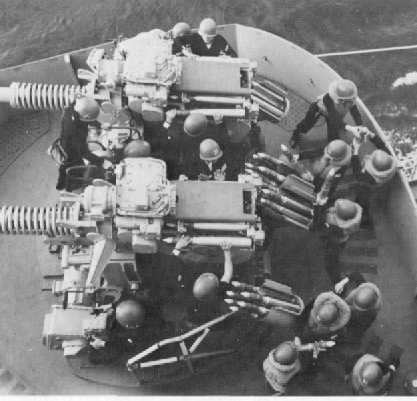
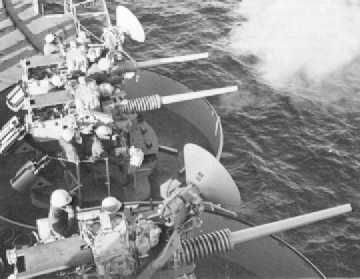

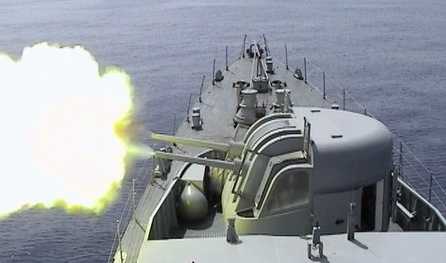
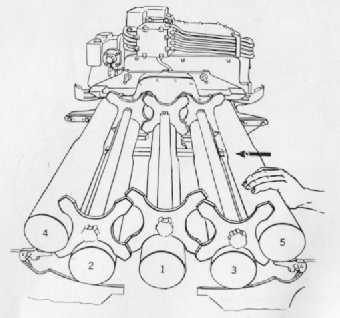
"Jane's Pocket Book 9: Naval Armament" edited by Denis Archer
"Naval Weapons of World War Two" by John Campbell
"US Naval Weapons" and "The Naval Institute Guide to World Naval Weapon Systems 1991/92" both by Norman Friedman
"Jane's Ammunition Handbook: Ninth Edition 2000-2001" edited by Terry J. Gander and Charles Q. Cutshaw
"British Aircraft Carriers: Design, Developmnet and Service Histories" by David Hobbs
"U.S. Navy Bureau of Ordnance in World War II" by Lt. Cmdr. Buford Rowland, USNR, and Lt. William B. Boyd, USNR
---
"Naval Ordnance and Gunnery - Navpers 16116-B - 1952" by Department of Ordnance and Gunnery, U.S. Naval Academy
"Abridged Range Tables for U.S. Naval Guns - Ordnance Pamphlet No. 1188 - 13 June 1944" by Bureau of Ordnance (BuOrd), Department of the Navy
"U.S. Explosive Ordnance - Ordnance Pamphlet No. 1664 - May 1947" by Bureau of Ordnance (BuOrd), Department of the Navy
---
USS Biddle Website
---
Gene Slover's Navy Pages
---
Special help from Kenneth Boe
12 February 2008 - Benchmark
16 September 2009 - Added note about the roles of the gun-layers
22 October 2015 - Noted use on HMS Victorious
20 November 2015 - Corrected typographical error
25 March 2019 - Reorganized notes, minor changes
09 August 2023 - Revised range table
25 March 2024 - Corrected formatting problem
